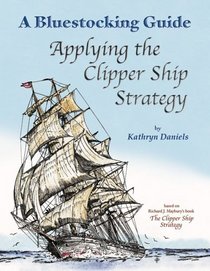Search -
Bluestocking Guide: Applying the Clipper Ship Strategy
Bluestocking Guide Applying the Clipper Ship Strategy
Author:
"A Bluestocking Guide: Applying the Clipper Ship Strategy" is designed to reinforce and enhance a student's understanding of the subject matter presented in the primer "The Clipper Ship Strategy" an Uncle Eric book by Richard J. Maybury. Comprehension Questions are given for each chapter and may include Definition, True/False, and/or Short Answ... more »
Author:
"A Bluestocking Guide: Applying the Clipper Ship Strategy" is designed to reinforce and enhance a student's understanding of the subject matter presented in the primer "The Clipper Ship Strategy" an Uncle Eric book by Richard J. Maybury. Comprehension Questions are given for each chapter and may include Definition, True/False, and/or Short Answ... more »
ISBN-13: 9780942617504
ISBN-10: 0942617509
Publication Date: 5/1/2005
Pages: 95
Rating: ?
ISBN-10: 0942617509
Publication Date: 5/1/2005
Pages: 95
Rating: ?
0 stars, based on 0 rating




